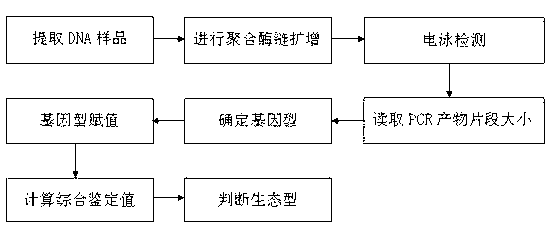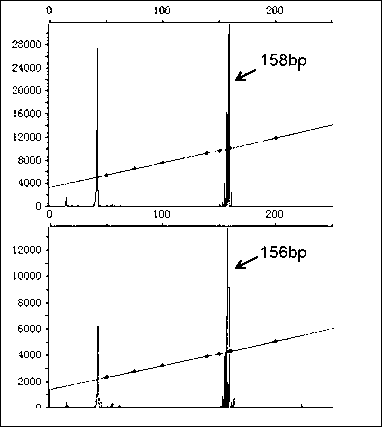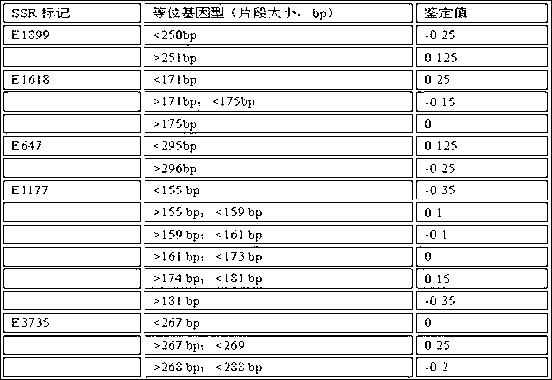Method for identifying rice and dry rice
A technology of rice and identification value, applied in the directions of biochemical equipment and methods, microbial determination/inspection, etc., can solve the problems of water and terrestrial ecotype confusion of cultivated rice germplasm resources, and problems of germplasm resource utilization and research, etc. Good promotion and application prospects, simple identification method, fast and efficient effect
- Summary
- Abstract
- Description
- Claims
- Application Information
AI Technical Summary
Problems solved by technology
Method used
Image
Examples
Embodiment 1
[0047]The rice and upland rice ecotypes of 30 domestic cultivated rice germplasm resources were identified by 5 pairs of SSR molecular markers. The specific experimental materials are shown in Table 4.
[0048] Table 4. 30 local species of rice and upland rice from different regions in my country.
[0049]
[0050] Extract a DNA sample from any organ or tissue of a rice plant (including seeds, seedlings, adult plants, stems, leaves, etc.), and carry out polymerase chain amplification to the sample DNA. The polymerase chain amplification system used in the present invention is conventional The three-primer PCR system, the PCR instrument produced by any company and the reagents produced and synthesized by any biological reagent company can be used to achieve the purpose. PCR reaction conditions and program are as follows among the present invention (20 μ l system):
[0051] PCR reaction conditions:
[0052] 1) 10×Taq buffer (containing 25mM MgCl2) 2μl
[0053] 2) 10mM dNT...
Embodiment 2
[0074] Using 5 pairs of SSR molecular markers to identify the rice and upland rice ecotypes of 20 international cultivated rice germplasm resources. The specific experimental materials are shown in Table 6.
[0075] Table 6. 20 rice and upland rice landrace materials from different regions of the world.
[0076]
[0077] DNA samples are extracted from any organs or tissues of rice plants (including seeds, seedlings, adult plants, stems, leaves, etc.), and polymerase chain amplification is performed on the sample DNA. The polymerase chain amplification system used in the present invention is a conventional three-primer PCR system, and the PCR instrument produced by any company and the reagents produced and synthesized by any biological reagent company can be used to achieve the purpose. The PCR reaction conditions and procedures are as follows (20 μl system):
[0078] PCR reaction conditions
[0079] 1) 10×Taq buffer (containing 25mM MgCl2) 2μl
[0080] 2) 10mM dNTP Mixt...
PUM
 Login to View More
Login to View More Abstract
Description
Claims
Application Information
 Login to View More
Login to View More - R&D
- Intellectual Property
- Life Sciences
- Materials
- Tech Scout
- Unparalleled Data Quality
- Higher Quality Content
- 60% Fewer Hallucinations
Browse by: Latest US Patents, China's latest patents, Technical Efficacy Thesaurus, Application Domain, Technology Topic, Popular Technical Reports.
© 2025 PatSnap. All rights reserved.Legal|Privacy policy|Modern Slavery Act Transparency Statement|Sitemap|About US| Contact US: help@patsnap.com



